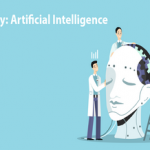Extreme Programming (XP)
XP is a software development methodology which is intended to improve software quality and responsiveness to changing customer cycles. A type of Agile software development, it advocates frequent “releases” in short development cycles, which is intended to improve productivity and introduce checkpoints at which new customer requirements can be adopted.
Source: https://en.wikipedia.org/wiki/Extreme_programming
Quality at Every Step
A principle of Lean Software Development that says quality output is not only measured at the end of the production line but at every step of the productive process and is the responsibility of each individual who contributed to the production or on-time delivery of a product or service
Source: http://www.leanmanufacture.net/leanterms/qualityatthesource.aspx
Just in Time
A principle of Lean Software Development, Just in Time is a workflow methodology aimed at reducing flow times within a production system, as well as the response times from suppliers and to customers; it helps organizations to control variability within production, which improves productivity and decreases costs.
Source: https://leankit.com/learn/lean/what-is-just-in-time-manufacturing/
Deliver as Fast as Possible
This principle of Lean Software Development centers around the idea that the faster you deliver your product to customers, the faster you will receive feedback, which in turn will get the customers what they want faster.
Source: https://www.planview.com/resources/guide/lean-principles-101/
Amplify Learning
Also referred to as continuous learning, amplify learning is a process in which we increase the ability of the development team to learn quickly and effectively, with the most important subject of learning being user needs and feedback
Source: https://subscription.packtpub.com/book/web_development/9781788299671/10/ch10lvl1sec85/self-healing-tests
ETL Testing
ETL stands for “Extract-Transform-Load” and it is a process of how data is loaded from the source system to the data warehouse; the data is extracted from a transaction database, transformed to match the requirements of the data warehouse, and then loaded into the data warehouse database.
Source: https://www.guru99.com/utlimate-guide-etl-datawarehouse-testing.html
Data Warehouse (DW)
A database that is designed for query and analysis rather than for transaction processing. It is constructed by integrating the data from multiple heterogeneous sources, enabling a company or organization to consolidate data from several sources and separate analysis workload from transaction workload.
Source: https://www.guru99.com/utlimate-guide-etl-datawarehouse-testing.html
Build Validation Testing (BVT)
Build Verification Test is a set of tests run on every new build to verify that build is testable before it is released to test team for further testing. These test cases are core functionality test cases that ensure the application is stable and can be tested thoroughly.
Source: https://www.softwaretestinghelp.com/bvt-build-verification-testing-process/
NFC (Near-field communication)
Near-field communication (NFC) is a set of communication protocols by which two electronic devices communicate when they are brought within 4 cm (11⁄2 in) of each other.
Source: https://en.wikipedia.org/wiki/Near-field_communication
Cross-Browser Testing
Cross Browser Testing is a process to test web applications across multiple browsers. Cross-browser testing involves checking the compatibility of your application across multiple web browsers and ensures that your web application works correctly across different web browsers. Cross-Browser testing involves testing both the client-side and server-side behavior of your Web application when it is accessed using different Web Browsers.
Source: http://www.appperfect.com/services/web-testing/cross-browser-testing.php
Xpath
XPath (XML Path Language) is a query language for selecting nodes from an XML document. In addition, XPath may be used to compute values (e.g., strings, numbers, or Boolean values) from the content of an XML document.
Source: https://en.wikipedia.org/wiki/XPath
BI Report Testing
BUSINESS INTELLIGENCE (BI) is the process of gathering, cleansing, analyzing, integrating and sharing data to derive actional insights that drive business growth. Business Intelligence Testing or BI testing verifies the staging data, ETL process, BI reports and ensures the implementation is correct. BI Testing ensures data credibility and accuracy of insights derives from the BI process.
Source: https://www.guru99.com/business-intelligence-testing-sample-test-cases.html


















